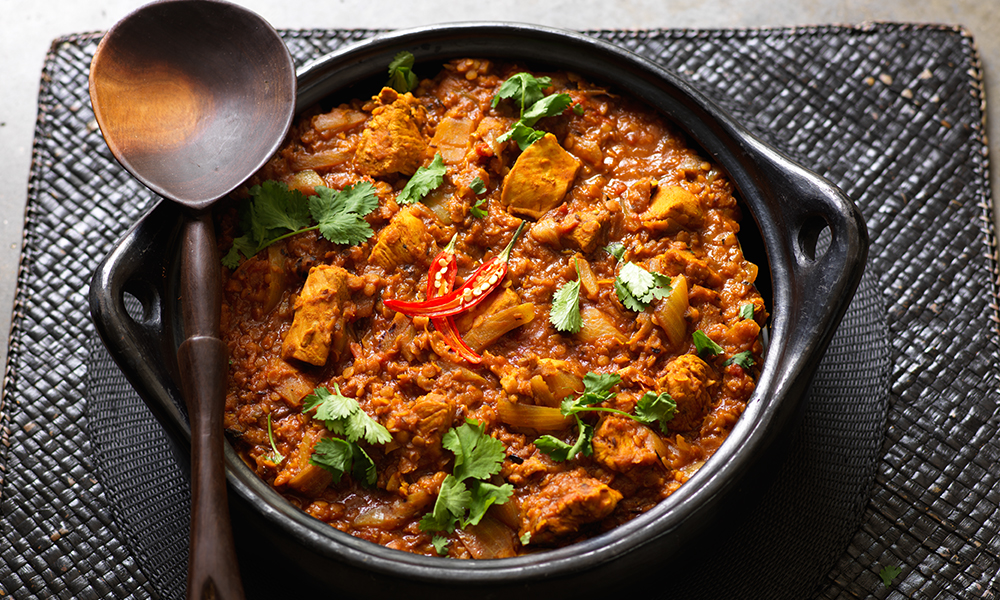
We're all throwing away a scary amount of food we could be eating – seven million tonnes of it every year according to Love Food Hate Waste.
The average UK family bins £60 worth of food every month, which adds up to over £700 a year. This is not only a waste of our money – it's bad for the environment, too.
We can all learn a few simple techniques, to reduce the amount of food we waste and still eat healthily. The key to healthy eating and reducing food waste is planning and if you have diabetes planning out your meals in advance is especially helpful because it's the first step to ensuring we eat a healthy, balanced diet.
Read our top tips on cutting down waste and using up your leftovers in the best ways possible.
{"preview_thumbnail":"/resources-s3/public/styles/video_embed_wysiwyg_preview/public/video_thumbnails/WYhzB96EHm0.jpg?54F6VYvx6vj4nnR6Tehng0A5vVssOdVi&itok=ziHUoW7S","video_url":"https://www.youtube.com/watch?v=WYhzB96EHm0&feature=emb_title","settings":{"responsive":1,"width":"854","height":"480","autoplay":0},"settings_summary":["Embedded Video (Responsive)."]}
What do we mean by food waste at home?
There are two types of waste:
Plate waste
That's food that we leave on our plates when we've finished our meal, which we then put straight into the bin. This is usually caused by serving up portion sizes that are too big.
What's the solution?
- Measure out your portion sizes.
- Use serving bowls on the table so that everyone can serve themselves what they want. Any uneaten food can then be stored in the fridge or freezer and served again or made into another dish.
- Alternatively, serve small portions and leave the rest of the food in the pan in case anyone wants seconds. If not, you can freeze for another day.
Fridge and cupboard waste
Food that's thrown away because it has either gone off or has passed its use-by date.
What's the solution?
- Don't buy too much when you're out shopping. Before you go to the shops, think about what you've already got at home, make a list and stick to it.
- Rotate food in the fridge so that items that need to be used first are at the front in your eye line as you open the door.
What’s the difference between use-by and best-before dates?
Best-before dates
are for guidance. Food that has passed its best-before date can be safely consumed. It may not be at its freshest but it is safe to eat.
Use-by dates
are put on foods that go off quickly such as meat, fish, ready meals and prepared salads. Eating food past its use-by date could give you food poisoning, so try to eat it within the use-by date on the packaging. Likewise, if the label says eat within three days of opening, make sure you do. If you find something that is near it's use-by date, you can freeze it to extend its shelf life.
Top tips to use foods reaching their use-by dates
Meat and poultry
Fresh meat can be frozen or cooked into an easy stew or curry, then stored in the fridge for three days or frozen for a future meal. Save and freeze bones and carcasses to make stock. Cooked meat, such as chicken, can be frozen then used in pies or omelettes.
Try these meals from our recipe finder.

Fruit
- Chop and freeze any fruits, like berries, in portion-size bags to make smoothies. See our summerberry smoothie recipe.
- Freeze wedges of lemon, lime or orange and use in drinks.
- Peel and freeze bananas even if they’re going black. Use over-ripe ones in cakes such asBanana bread
Vegetables
- Peppers, courgettes, aubergines and onions that need using up can all be roasted in a little olive oil and kept in the fridge for 3-4 days. They are great in salads, as pizza toppings or in pasta sauces. See our Roasted vegetables with ginger and garlic recipe.
- Make Minestrone soup, which works with most vegetables, or just trim and freeze veggies to make minestrone another day. See our Hearty minestrone soup recipe.
- Wilting vegetables can be used to make a delicious vegetable stock. Even if they don’t look perfect, vegetables are still nutritious.
Salad
Lettuce, spring onions, radishes, tomatoes and cucumber can be added to soups, or frozen to make soup at a later date.
Dairy
- Milk and yogurt are easily frozen but may separate, so are best used in cooking once frozen. Freeze in small portions (ice cube trays or plastic cups) to add to soups or curry, or to make a smoothie.
- Fruit yogurt makes great frozen lollipops.
- You can freeze hard cheeses, such as Cheddar without losing much flavour. Simply grate and pop into a freezer bag, label and store. Soft cheeses, like cottage cheese, become watery and grainy and don’t freeze that well.
Eggs
-
Eggs can be eaten after their best-before date but should be thoroughly cooked with a solid white and yolk.
-
To freeze, just crack into a suitable container like a plastic container and defrost to use in cakes or frittata. Label and use within 28 days. See our Ham & leek frittata recipe.
Pasta dishes
- These can be frozen, especially lasagne or cannelloni, but the texture can become a bit mushy when reheated.
- You can use leftover pasta in stir-fries and season with Chinese-five spice.
How to freeze and defrost food safely
- To freeze food, cool it down quickly (ideally within an hour), divide into portions, wrap well or place in an airtight container, label, freeze and use within three months.
- Defrost in the fridge, ideally overnight, and use within 24 hours after defrosting. Reheat in a microwave or covered in foil in the oven, heating thoroughly until piping hot.
Find out what you can't freeze - and more tips on freezing.
